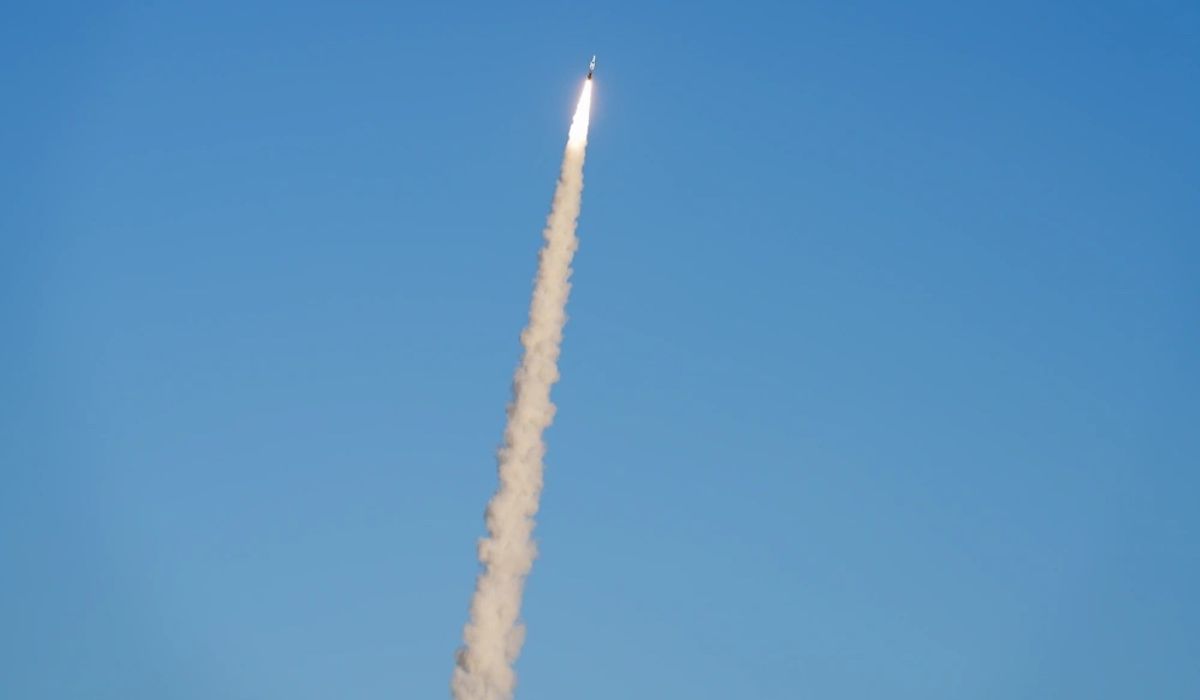


The U.S. Army conducted the first live-firing of a new midrange capability missile system in the Pacific during large-scale military drills last week in northern Australia.
An SM-6 missile was fired from the new system Wednesday, according to a statement from the Army, hitting and sinking a sea-based target during Talisman Sabre 25, a bilateral U.S. and Australian exercise now underway.
“The deployment of the [Mid-Range Capability] and successful execution of an SM-6 live fire against a maritime target is another significant step forward in our ability to deploy, integrate and command and control advanced land-based maritime strike capabilities,” said Col. Wade Germann, commander of the Army’s 3rd Multi-Domain Task Force.
The exercise validated targeting and command and control cooperation with the Australian military, he said.
“We have set the stage to develop and deploy combat-credible, multidomain capabilities forward in support of the combined and joint force,” Col. Germann said.
The missile firing followed Chinese naval live-fire drills near Australia in February that prompted protests from Canberra over the lack of notification. Airline flights were forced to divert flight paths during the unprecedented live-fire exercise.
Chinese warships also conducted a circumnavigation of Australia around the same time.
The new missile system, also known as the Typhon, can fire precision-guided SM-6 missiles and long-range Tomahawk cruise missiles. The SM-6 has a range of around 300 miles and the Tomahawk can hit targets up to 1,200 miles.
Its first overseas deployment to Luzon in the Philippines in April 2024 drew criticism from China since the missiles can target Chinese ships in the South China Sea and military sites on Chinese territory.
The new weapon, according to military experts, is part of an updated U.S. strategy that bolsters long-range attack capabilities to better counter China’s large buildup of intermediate-range and long-range missiles in the Pacific.
In the past, the U.S. military’s focus was on defenses against Chinese missiles.
The MRC test firing comes as Australia announced in October it is spending $7 billion to purchase SM-6 multimission missiles, along with SM-2 anti-ship missiles.
Australia has committed to buying 200 Tomahawk missiles. Japan plans to purchase 400 Tomahawks.
Both the SM-6 and Tomahawk can be fired by the new MRC system.
The Navy’s Standard Missile-6 was initially built by defense contractor Raytheon as an anti-missile interceptor. It has since been modified to conduct three types of operations: attacks against aircraft, drones and cruise missiles, a surface-to-surface missile and an anti-ship missile.
The MRC is also said by the Army to have some capability of intercepting Chinese hypersonic maneuvering missiles.
The Army called the recent launch of the new missile a significant milestone for U.S. military land-based maritime strike and strategic strike capabilities as part of the service’s long-range precision fires program.
“This was the first time that a land-based MRC has been fired west of the international date line, marking a significant milestone in the development and employment of the U.S. military’s land-based maritime strike capabilities,” the Army said.
The containerized missile launcher for the MRC is based on the Navy’s MK 41 launcher used on warships.
No other details were provided by the Army on the target ship or the specific location of the SM-6 launch other than northern Australia.
However, it appears the missile system was moved to Australia by cargo aircraft for the exercises.
China threatened unspecified retaliatory action unless the MRC was removed from the Philippines.
The missile system was moved from northern Luzon to another location in the Philippines.
In a related development, the aircraft carrier USS George Washington and the British carrier HMS Prince of Wales sailed together during Talisman Sabre days after the missile test.
It was the first time the two nations’ carriers operated together in the annual exercise.
Both carriers deploy the new F-35 stealth fighters.
On Monday, U.S. Marines and Australian soldiers practiced seizing remote airfields as part of Talisman Sabre, in preparation for potential future operations in the region.
Last week, the Marines and Australians carried out an airborne raid to seize a town aboard V-22 Osprey transports.
Marine Corps Capt. Kendall Weigand, a KC-130J pilot with Marine Aerial Refueler Transport Squadron 153, told Stars and Stripes that flying deep into the outback was a new experience for many Marines.
“It’s wide open, wild terrain that’s unique to Australia,” he said. “We dropped into a canyon and saw a herd of wild horses. We were hoping for kangaroos.”
The exercises continue through Aug. 4.
• Bill Gertz can be reached at bgertz@washingtontimes.com.
